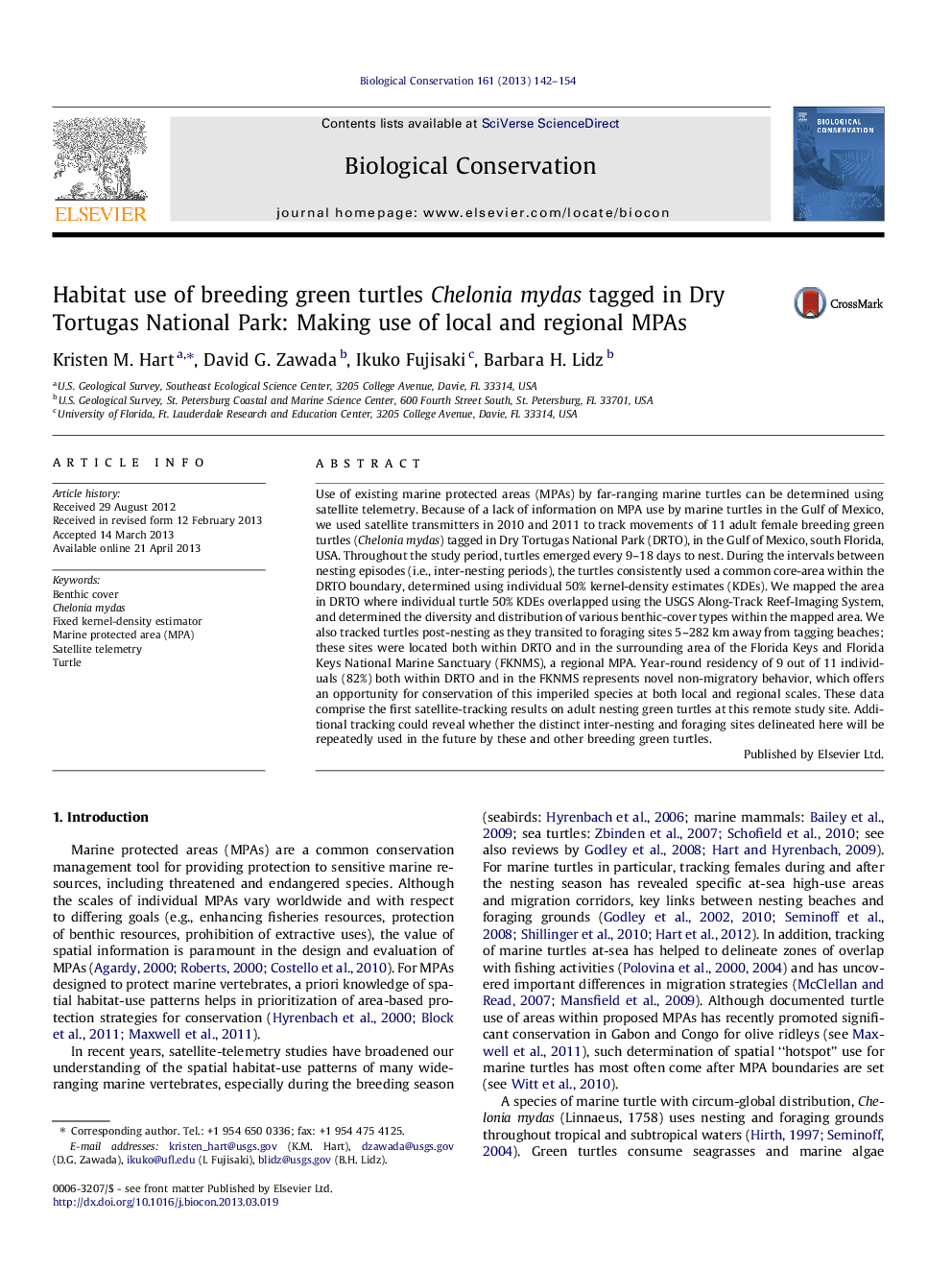| Article ID | Journal | Published Year | Pages | File Type |
|---|---|---|---|---|
| 6300720 | Biological Conservation | 2013 | 13 Pages |
â¢We examined movement paths of 11 breeding female green turtles.â¢Satellite tracking revealed locations of inter-nesting and foraging habitats.â¢High-use inter-nesting habitats were consistent across study years.â¢Foraging sites for 9 out of 11 turtles (82%) were within local and regional MPAs.â¢Significant use of MPAs by turtles represents an opportunity for conservation.
Use of existing marine protected areas (MPAs) by far-ranging marine turtles can be determined using satellite telemetry. Because of a lack of information on MPA use by marine turtles in the Gulf of Mexico, we used satellite transmitters in 2010 and 2011 to track movements of 11 adult female breeding green turtles (Chelonia mydas) tagged in Dry Tortugas National Park (DRTO), in the Gulf of Mexico, south Florida, USA. Throughout the study period, turtles emerged every 9-18Â days to nest. During the intervals between nesting episodes (i.e., inter-nesting periods), the turtles consistently used a common core-area within the DRTO boundary, determined using individual 50% kernel-density estimates (KDEs). We mapped the area in DRTO where individual turtle 50% KDEs overlapped using the USGS Along-Track Reef-Imaging System, and determined the diversity and distribution of various benthic-cover types within the mapped area. We also tracked turtles post-nesting as they transited to foraging sites 5-282Â km away from tagging beaches; these sites were located both within DRTO and in the surrounding area of the Florida Keys and Florida Keys National Marine Sanctuary (FKNMS), a regional MPA. Year-round residency of 9 out of 11 individuals (82%) both within DRTO and in the FKNMS represents novel non-migratory behavior, which offers an opportunity for conservation of this imperiled species at both local and regional scales. These data comprise the first satellite-tracking results on adult nesting green turtles at this remote study site. Additional tracking could reveal whether the distinct inter-nesting and foraging sites delineated here will be repeatedly used in the future by these and other breeding green turtles.
